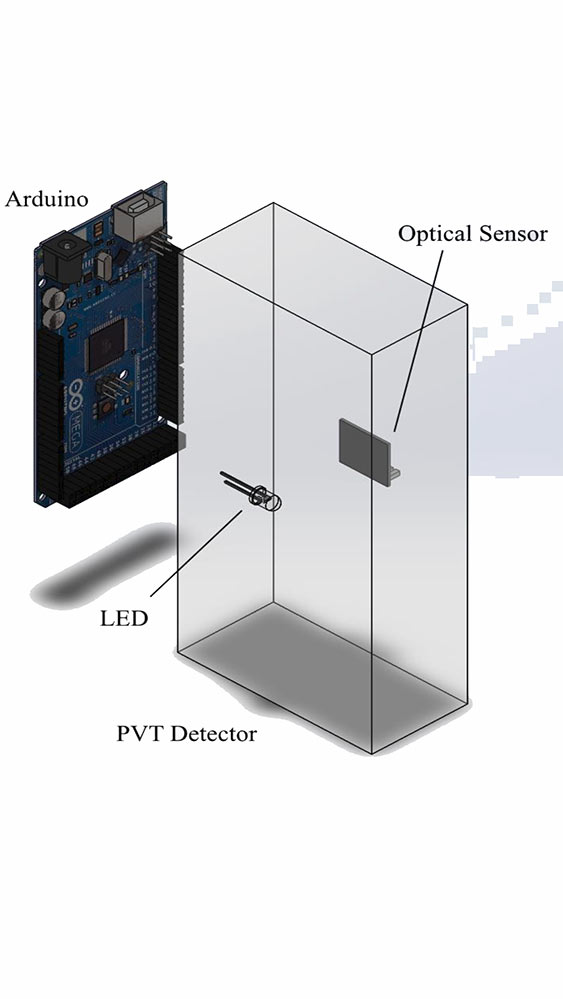
Radiation portal monitors are used around the world to detect the illegal transportation of radioactive material at border crossings and points of entry. These portal monitors utilize scintillating detectors composed of polyvinyl toluene (PVT) plastic to screen vehicles and cargo for gamma-ray emissions that would indicate the presence of radioactive materials.
Unfortunately, the PVT plastic has a tendency to fog over time due to exposure to temperature and humidity fluctuations. Rainbow Suh, a graduate student with the Center for Nuclear Security Science and Policy Initiatives (NSSPI), is part of a research team led by NSSPI deputy director Dr. Craig Marianno looking into solutions to the problem of PVT fogging. This work is sponsored by the United States Department of Energy’s National Nuclear Security Administration (NNSA).
According to Suh, “Recent studies confirmed PVT is susceptible to specific environmental changes and can cause radiation monitoring activities to slow down or cease if left unchecked.” PVT fogging represents a change in opacity that can lead to reduced light collection in the photomultiplier tube of the detector. Suh’s work has led to the development of an opacity monitoring system capable of observing changes in opacity in deployed detectors. Suh says this remote system is “necessary to determine the state of health of PVT detectors and extend the operational lifetime as part of the ongoing effort to combat nuclear and radiological smuggling.”
Suh’s final design consists of an array of multiple light-emitting diodes (LEDs) as a light source, an optical sensor, and a microcontroller board for data capture and transmission. Suh prototyped and tested the system for feasibility at Texas A&M University on a small scale and then performed testing on full-scale PVT panels in an environmental chamber at Oak Ridge National Laboratory. Tested over multiple hours of extreme temperature cycling, the system was able to register opacity changes in the PVT detector. The testing demonstrated not only the ability of the system to monitor the opacity of the PVT over time, it also demonstrated the ability of the hardware to resist extreme environmental conditions.

This system could be deployed to monitor the health of PVT in detectors at points of entry around the world to ensure that the detectors continue to work as intended to prevent radioactive materials from being smuggled across borders. “This work has been concluded and the design of the system was very successful. As an engineer, I could not have asked for a better challenge as a basis for my master’s thesis. From the very beginning, my work felt important, and the impact it would make was clear,” Suh said.
Having successfully defended her thesis, Suh will be graduating with a master’s degree in nuclear engineering with a specialization in nuclear nonproliferation from Texas A&M this summer. She previously earned her bachelor’s degree in nuclear engineering from Texas A&M with minors in physics and mathematics. She has participated in multiple international experiences, including the 2019 International Nuclear Facilities Experiences in the Netherlands, Germany and Austria, and an externship to France, Switzerland and Austria regarding nuclear waste management. She was recently selected as a fellow in the NNSA Graduate Fellowship Program.